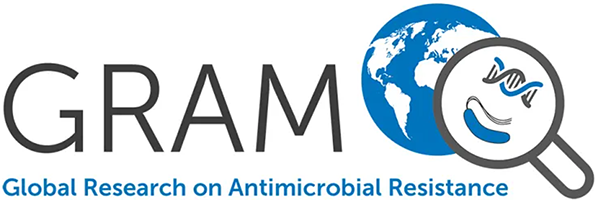Populations of extended-spectrum β-lactamase-producing Escherichia coli and Klebsiella pneumoniae are different in human-polluted environment and food items: a multicentre European study
Martak D., Guther J., Verschuuren TD., Valot B., Conzelmann N., Bunk S., Riccio ME., Salamanca E., Meunier A., Henriot CP., Brossier CP., Bertrand X., Cooper BS., Harbarth S., Tacconelli E., Fluit AC., Rodriguez-Baño J., Kluytmans JAJW., Peter S., Hocquet D.
Objectives: To assess the extent to which food items are a source of extended-spectrum β-lactamase (ESBL) -producing Escherichia coli (ESBL-Ec) and ESBL-producing Klebsiella pneumoniae (ESBL-Kp) for humans in five European cities. Methods: We sampled 122 human polluted (hp)-environments (sewers and polluted rivers, as a proxy of human contamination) and 714 food items in Besançon (France), Geneva (Switzerland), Sevilla (Spain), Tübingen (Germany) and Utrecht (The Netherlands). A total of 254 ESBL-Ec and 39 ESBL-Kp isolates were cultured. All genomes were fully sequenced to compare their sequence types (ST) and core genomes, along with the distribution of blaESBL genes and their genetic supports (i.e. chromosome or plasmid). Results: Sequence data revealed that ESBL-Ec and ESBL-Kp isolates from hp-environments were genetically different from those contaminating food items. ESBL-Ec ST131 was widespread in the hp-environment (21.5% of the isolates) but absent from the food items tested. ESBL-Ec ST10 was in similar proportions in hp-environments and food items (15 and 10 isolates, respectively) but mostly carried reservoir-specific blaESBL. blaCTX-M-1 and blaSHV-12 predominated in food-related E. coli isolates (32% and 34% of the isolates, respectively), whereas blaCTX-M-15 and blaCTX-M-27 predominated in isolates from hp-environments (52% and 15% of the isolates, respectively). Conclusions: We found a very limited connection between ESBL-Ec and ESBL-Kp populations retrieved in food items and from hp-environments and blaESBL. This suggests that human-to-human contamination, rather than the food chain, is possibly the most frequent route of ESBL-Ec and ESBL-Kp transmission in high-income countries.

